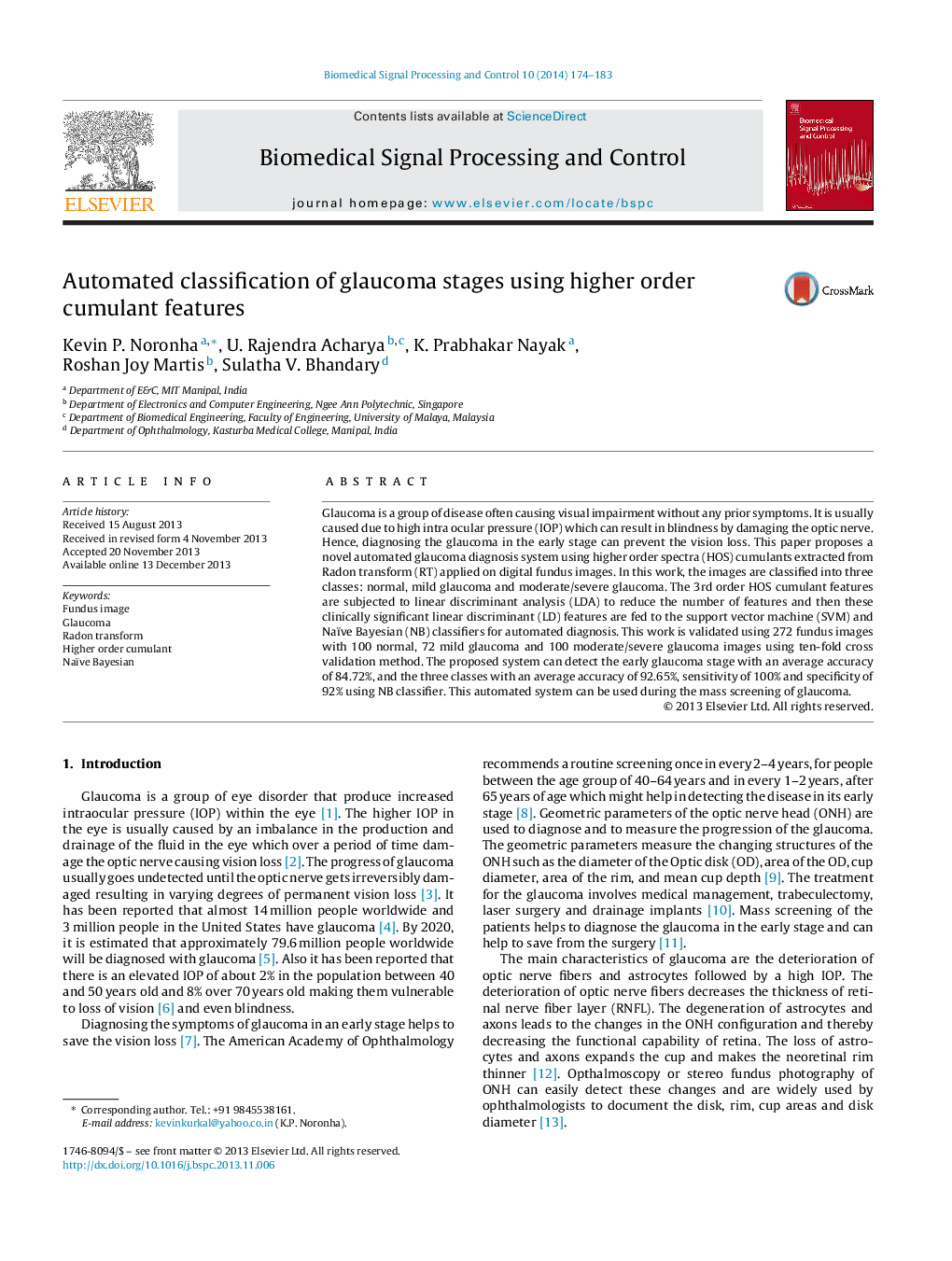| Article ID | Journal | Published Year | Pages | File Type |
|---|---|---|---|---|
| 558803 | Biomedical Signal Processing and Control | 2014 | 10 Pages |
•Normal, mild glaucoma and moderate/severe glaucoma classes are classified using digital fundus images.•Higher order spectra (HOS) cumulants and LDA are used to extract the features.•Proposed system can detect the early glaucoma stage with an average accuracy of 84.72%, and the three classes with an average accuracy of 92.65%, sensitivity of 100% and specificity of 92% using Naïve Bayesian classifier.
Glaucoma is a group of disease often causing visual impairment without any prior symptoms. It is usually caused due to high intra ocular pressure (IOP) which can result in blindness by damaging the optic nerve. Hence, diagnosing the glaucoma in the early stage can prevent the vision loss. This paper proposes a novel automated glaucoma diagnosis system using higher order spectra (HOS) cumulants extracted from Radon transform (RT) applied on digital fundus images. In this work, the images are classified into three classes: normal, mild glaucoma and moderate/severe glaucoma. The 3rd order HOS cumulant features are subjected to linear discriminant analysis (LDA) to reduce the number of features and then these clinically significant linear discriminant (LD) features are fed to the support vector machine (SVM) and Naïve Bayesian (NB) classifiers for automated diagnosis. This work is validated using 272 fundus images with 100 normal, 72 mild glaucoma and 100 moderate/severe glaucoma images using ten-fold cross validation method. The proposed system can detect the early glaucoma stage with an average accuracy of 84.72%, and the three classes with an average accuracy of 92.65%, sensitivity of 100% and specificity of 92% using NB classifier. This automated system can be used during the mass screening of glaucoma.
